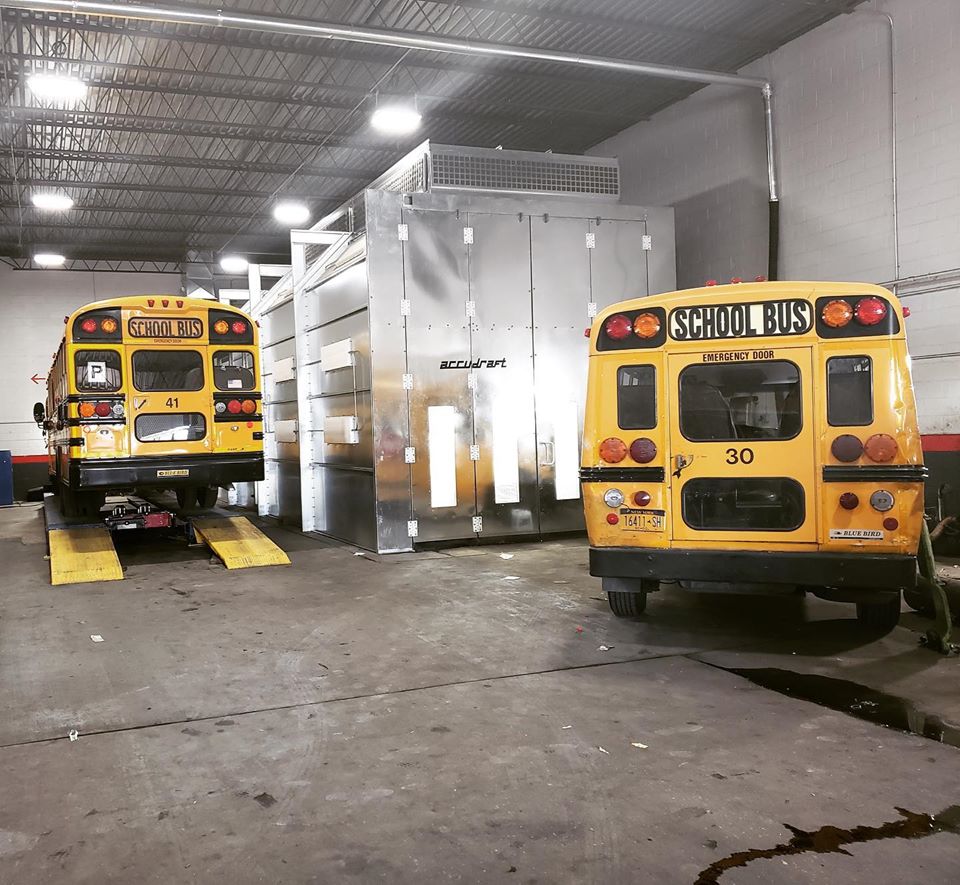
By Guido Pippa
Painting large buses and rail cars is quite different than the automobile painting found at normal collision repair centers. There is no one-size-fits-all method for painting large equipment Here are some key details to look for when spec’ing a paint system for your application.
System and project quality
The overall quality of a paint booth — cab, doors, structural integrity, and level of componentry — is paramount. That may seem like a given, but it requires adequate research. Who is making the best paint booth, and why?
The operational lifespan of your paint booth is critical to getting a return on your investment – which is more than just the cost of the equipment. The installation project, including planning, subcontractors, and construction, can sometimes cost more than the booth itself. From concrete and roofing installation to duct work to fire suppression, an installation project has many moving parts. If, after incurring all those costs, your machine is substandard, then your agency or operation will certainly not be getting its money’s worth.
Operational features
The next question to ask yourself is: what features are you looking for in your paint booth?
Heat or no heat?
The difference between heated paint booths and non-heated paint booths is significant in terms of dollars.
If your operation is in a colder climate, you need a heated booth. In warmer climates, some operators may get away with non-heated booths. However, with buses, a heater is always advisable because it helps raise paint substrates up to temperature. Paint jobs can be completed faster and the booth is future proofed for any level of increased workflow.
Heat recirculation
If you have a heated system, you should make sure that that system uses direct fire (meaning that the booth’s gas flame is directly in contact with the booth’s air stream) and recirculates a minimum of 80 percent of generated heat.
Many systems dump hot air into one end of the paint booth and then simply exhaust it from the other end, where it dissipates forever. If your system is running a bake cycle, where the booth can heat in excess of 100 degrees, recirculation will recycle the hot air past the intake unit – creating a closed loop of heat. This process helps minimize the amount of gas used by the system.

Variable frequency drives
Variable frequency drives (VFD) regulate the system’s fan and the motor speeds, thus adjusting the booth’s air pressure. They are essentially computers for motors, allowing for various modes including standby and economy.
Over the course of a year, VFDs can save thousands of dollars. Without them, a booth can only be turned “on” or “off.”
Painters’ lifts
Painters’ lifts are three-axis lifts optional with paint booths like those from Accudraft. Painters can move around a bus in a lift controlled via joystick. These lifts are probably the most essential optional feature sold with paint booths.
We estimate that these lifts can achieve anywhere from 30% to 50% in time savings per paint job.
Heat reclaim
Paint booth heat reclaim was engineered for recovering fuel costs. Offered optionally by Accudraft, heat reclaim lets the system use its hot exhaust air to temper cold intake air, minimizing fuels costs and maximizing heat efficiency. Ultimately, the system saves about 35 degrees of heat energy that would normally be wasted.
The larger your paint system, the more we recommend using heat recovery to save fuel and energy.
Guido Pippa is president and CEO of Accudraft (SAIMA of North America). For 43 years Accudraft has designed and built finishing systems and paint booths for the automotive and truck industries, as well as aircraft finishing industry, marine vessel finishing industry, train and rail car finishing industry, and many other industries that need spray finishing enclosures and solutions. Visit www.accudraftpaintbooths.com for more information.
